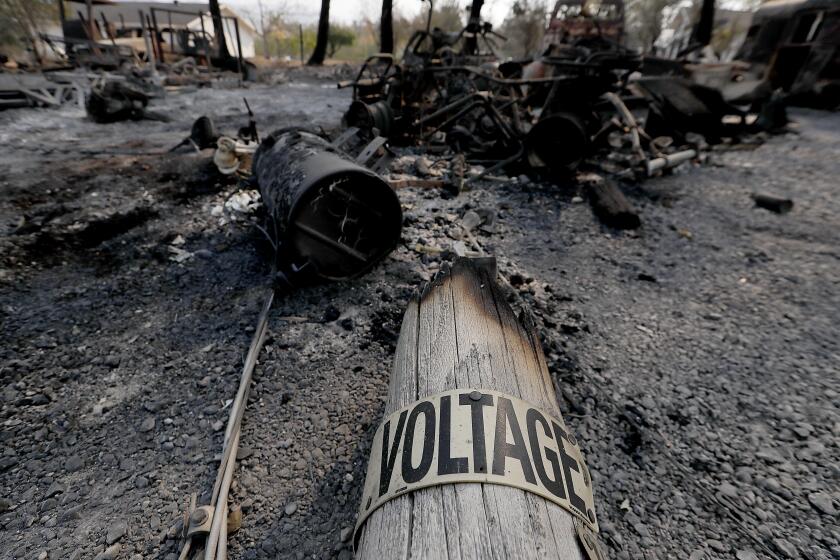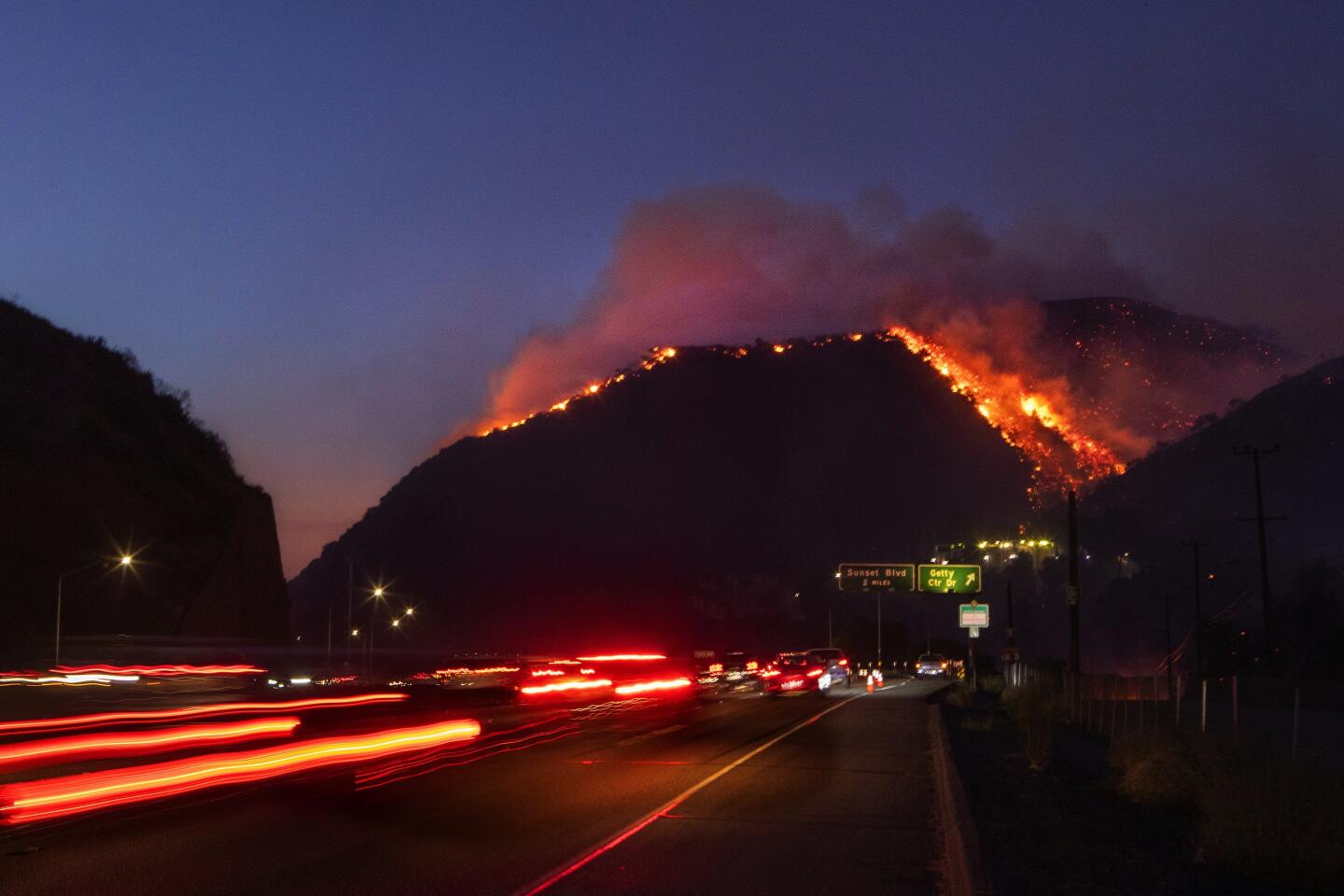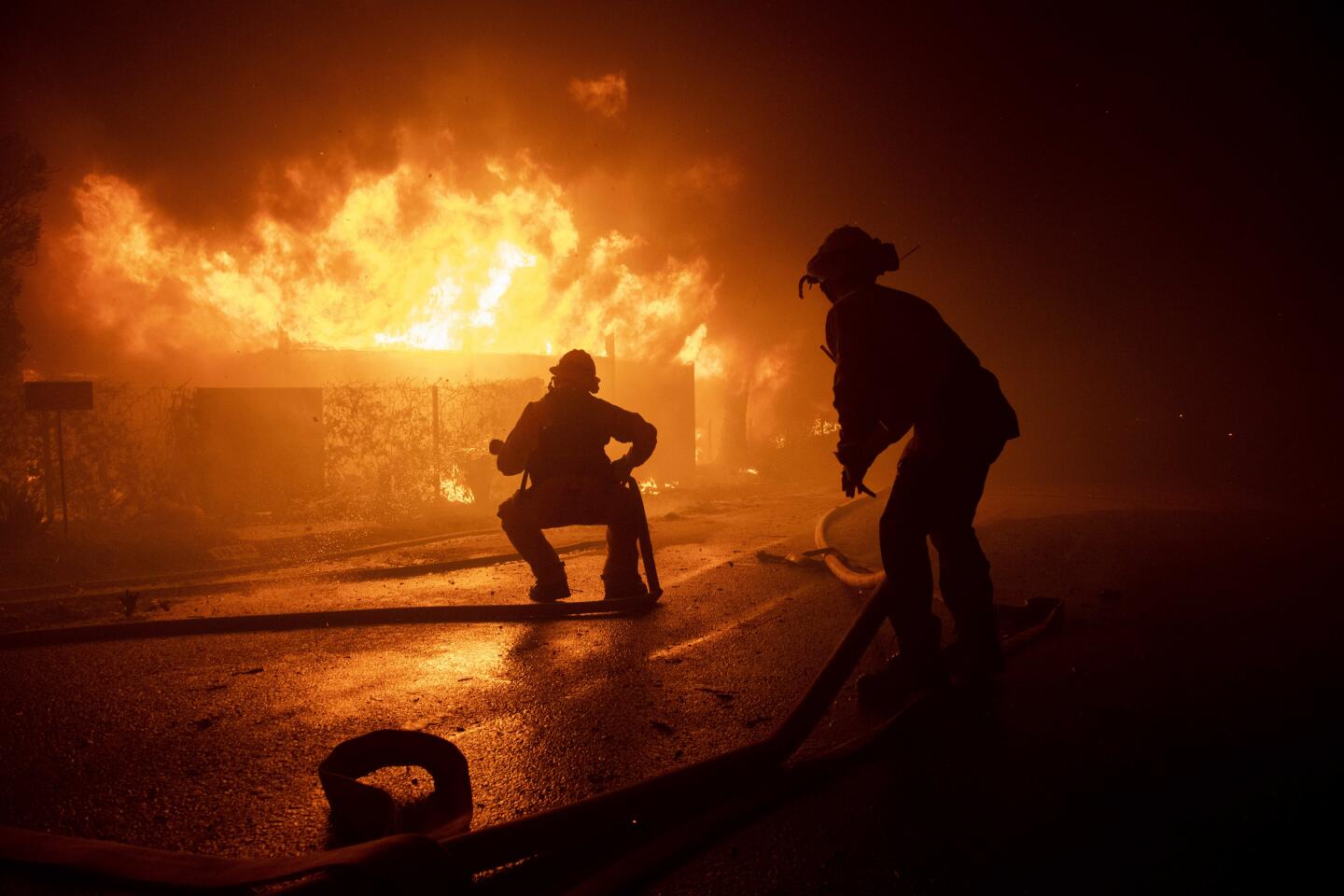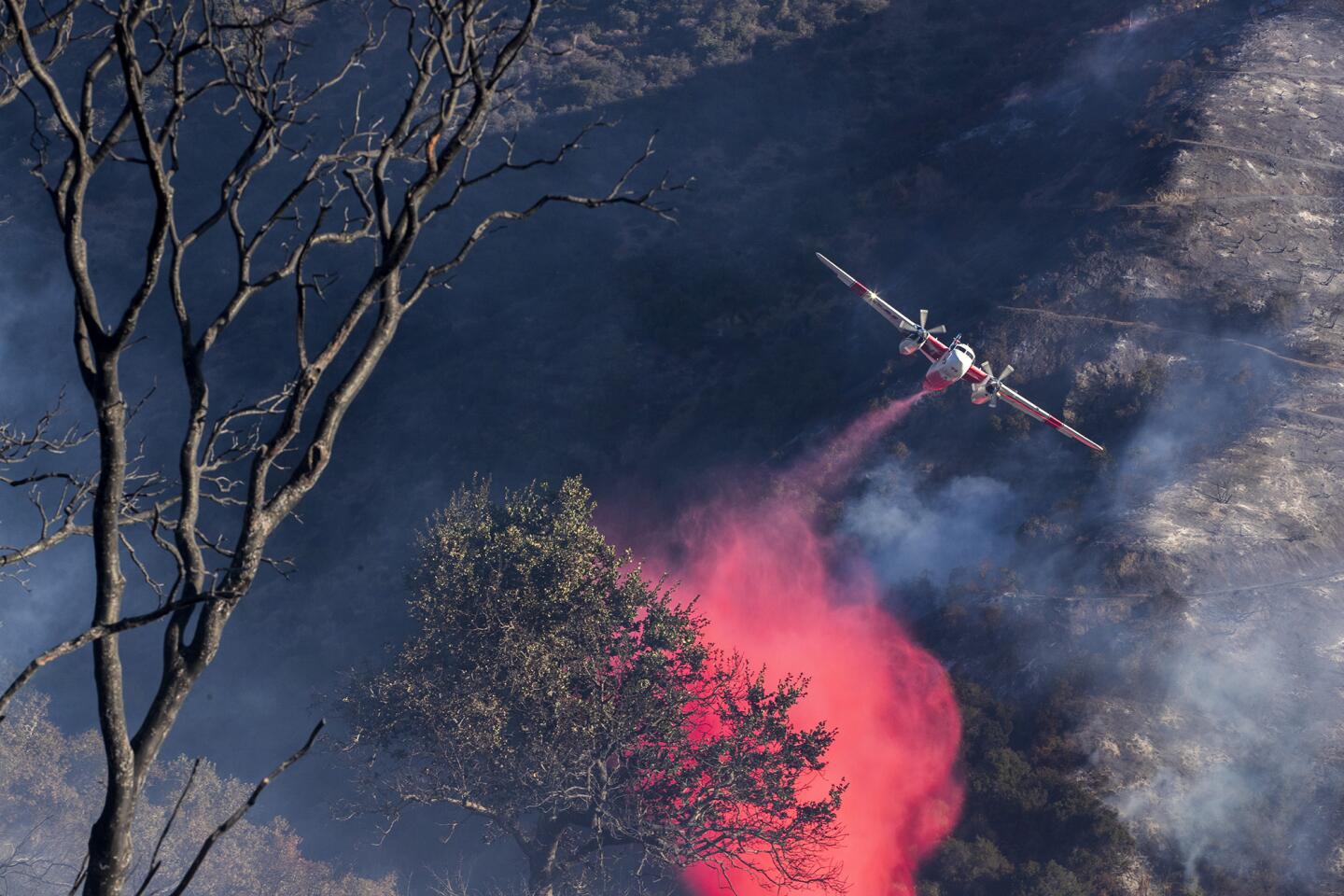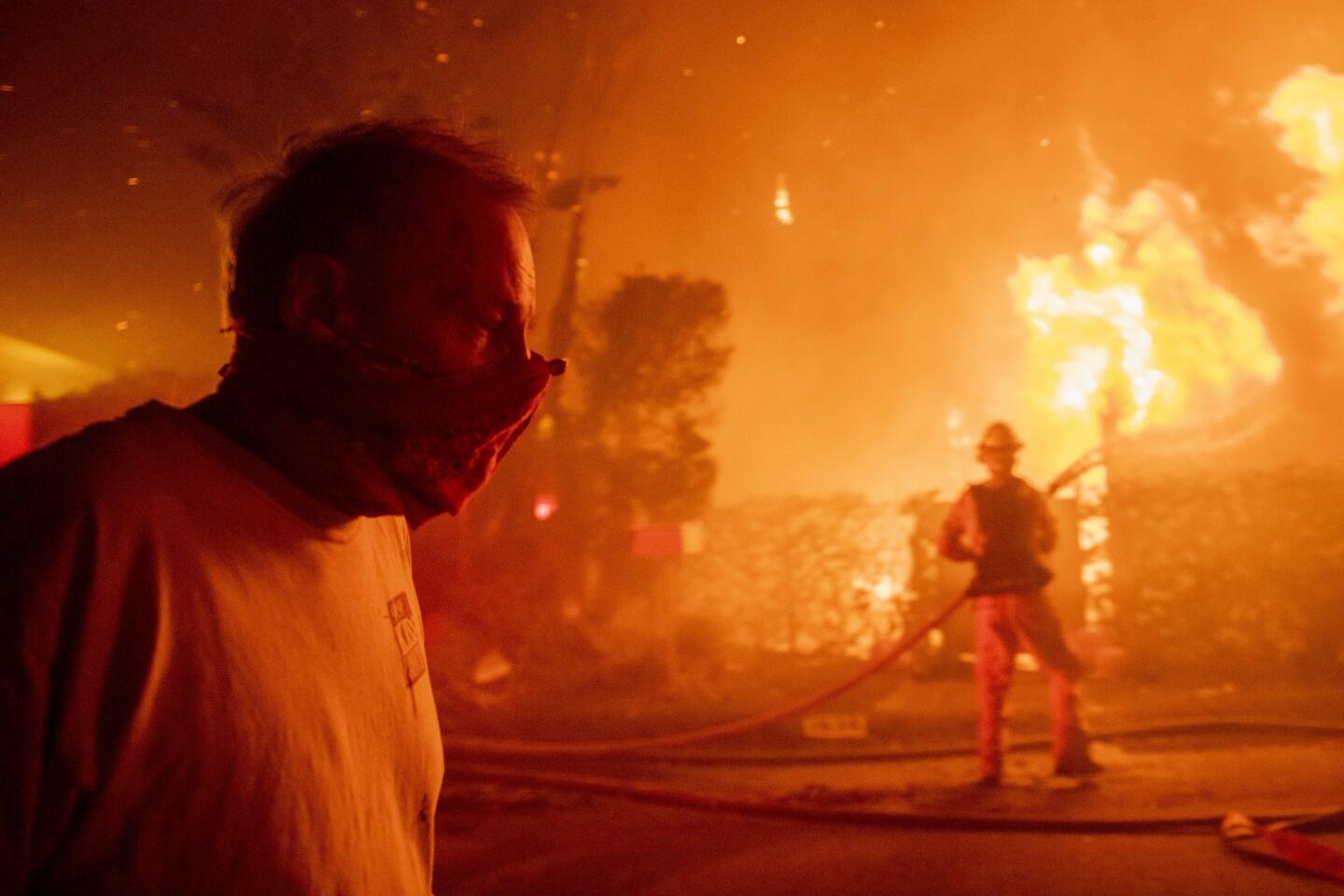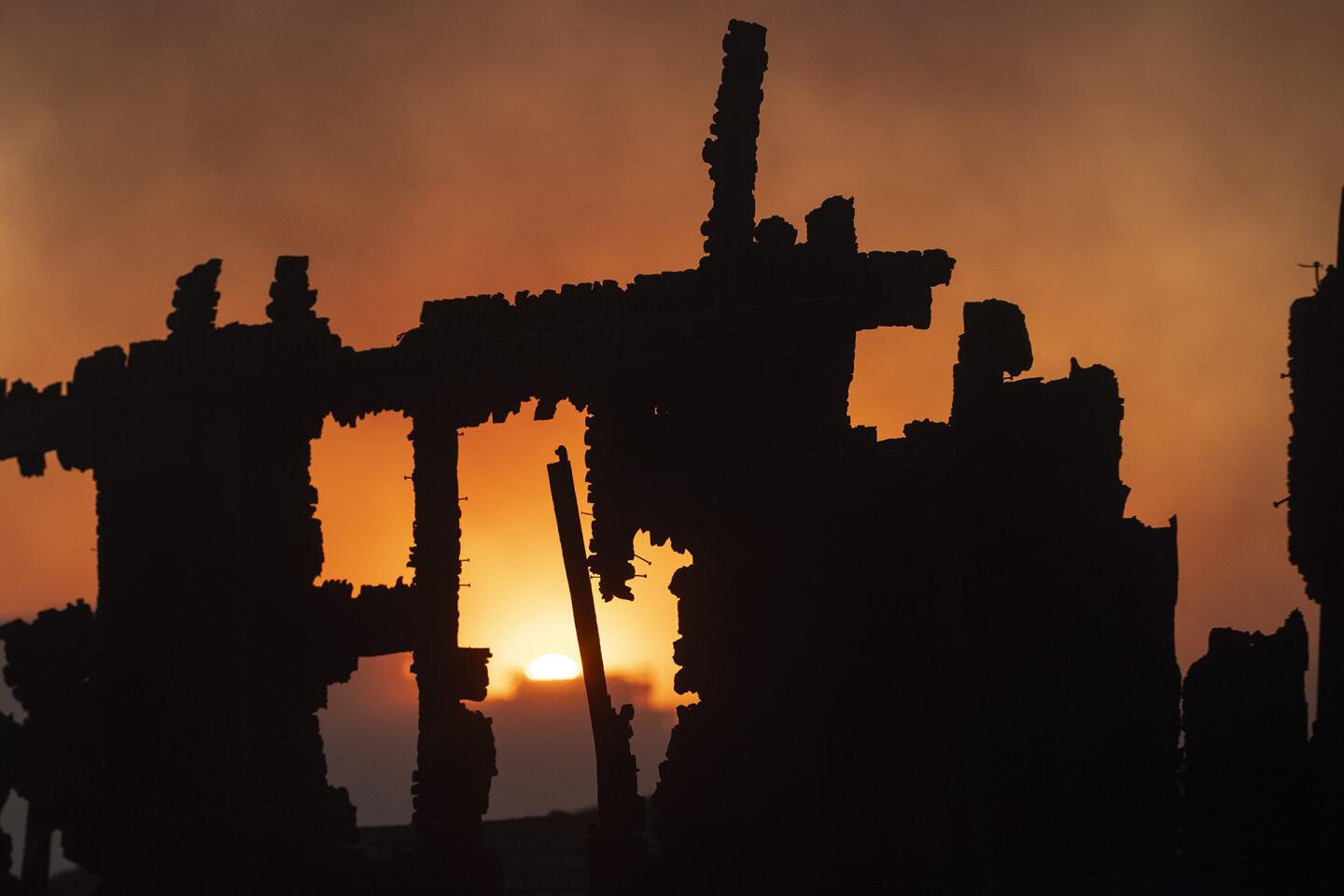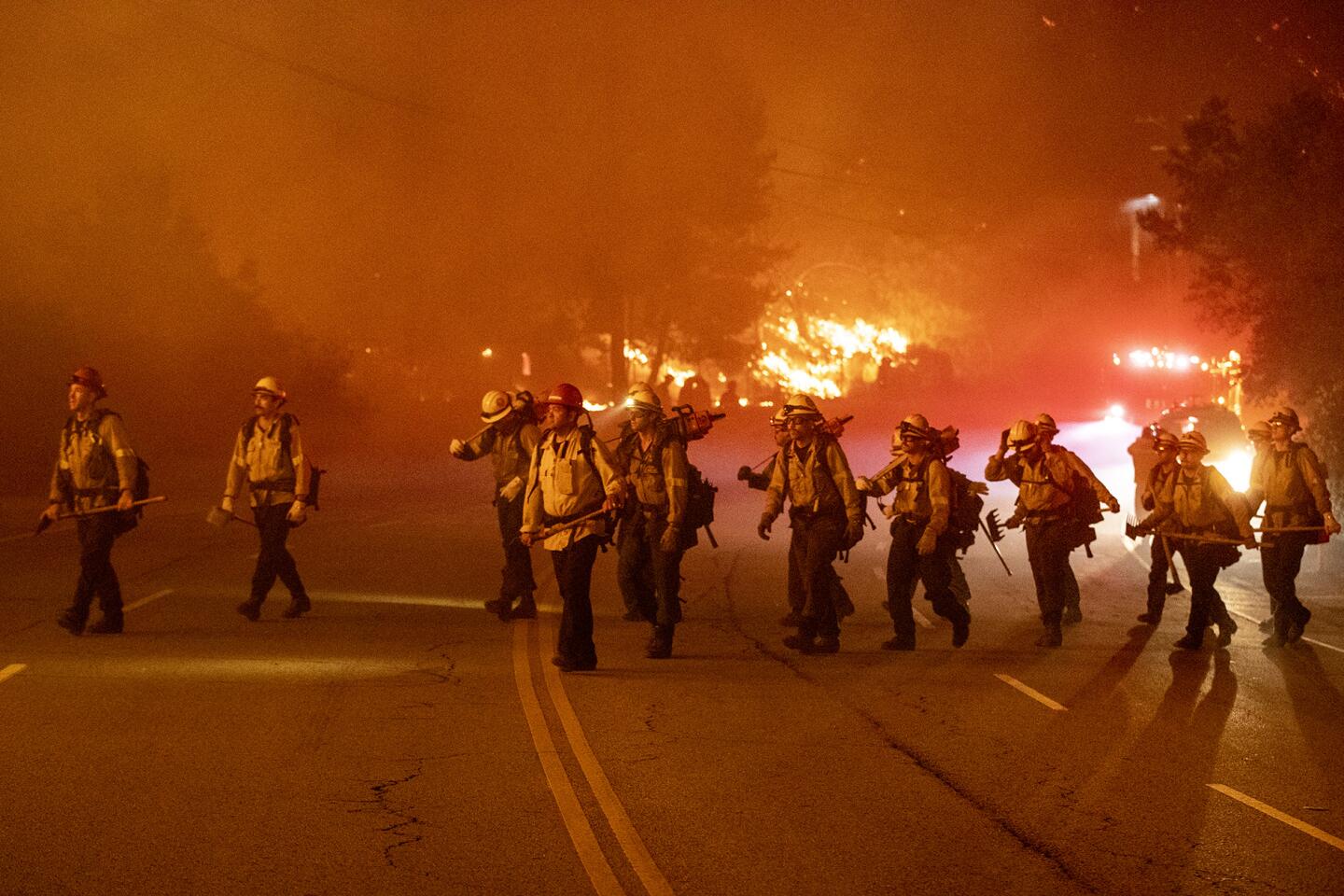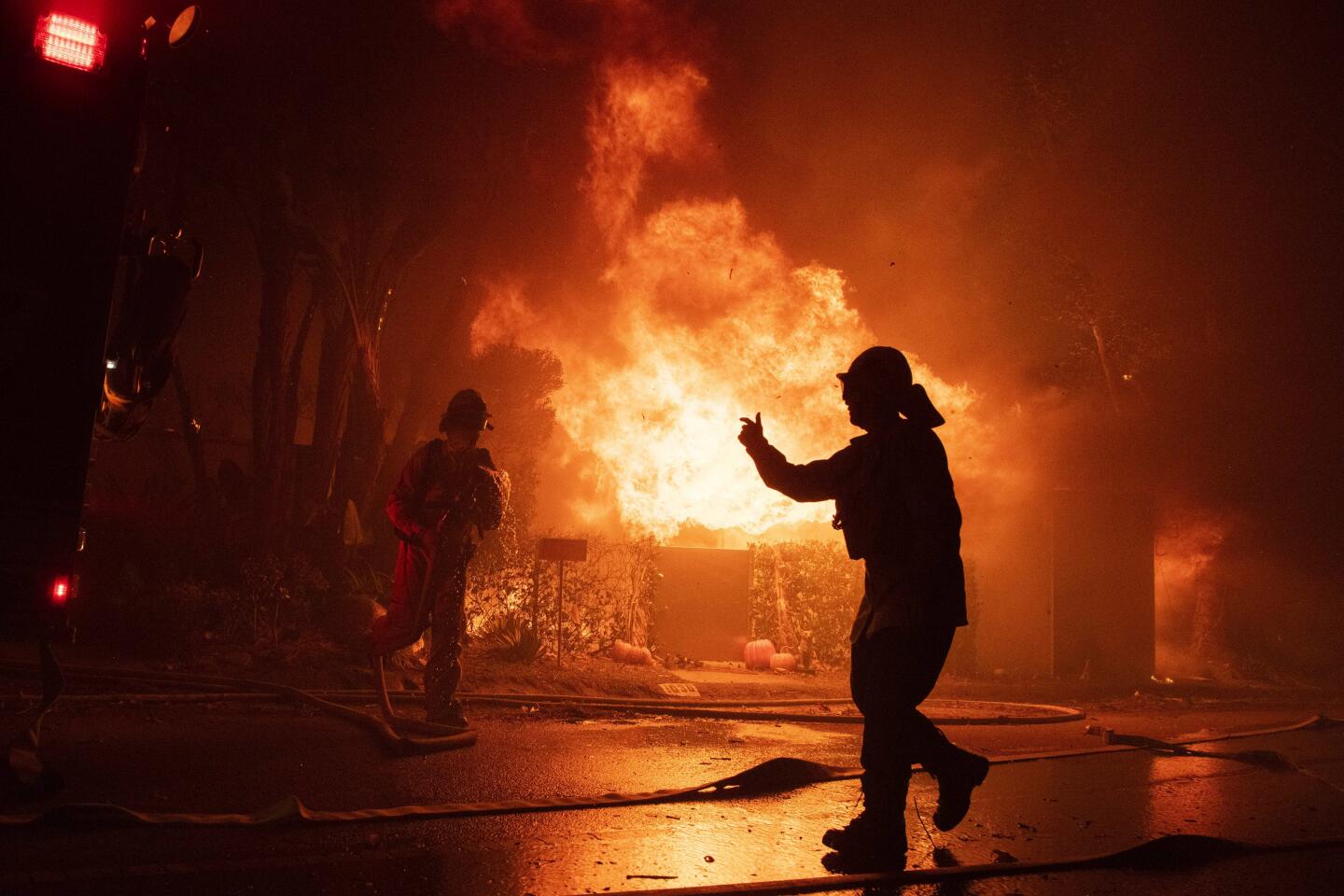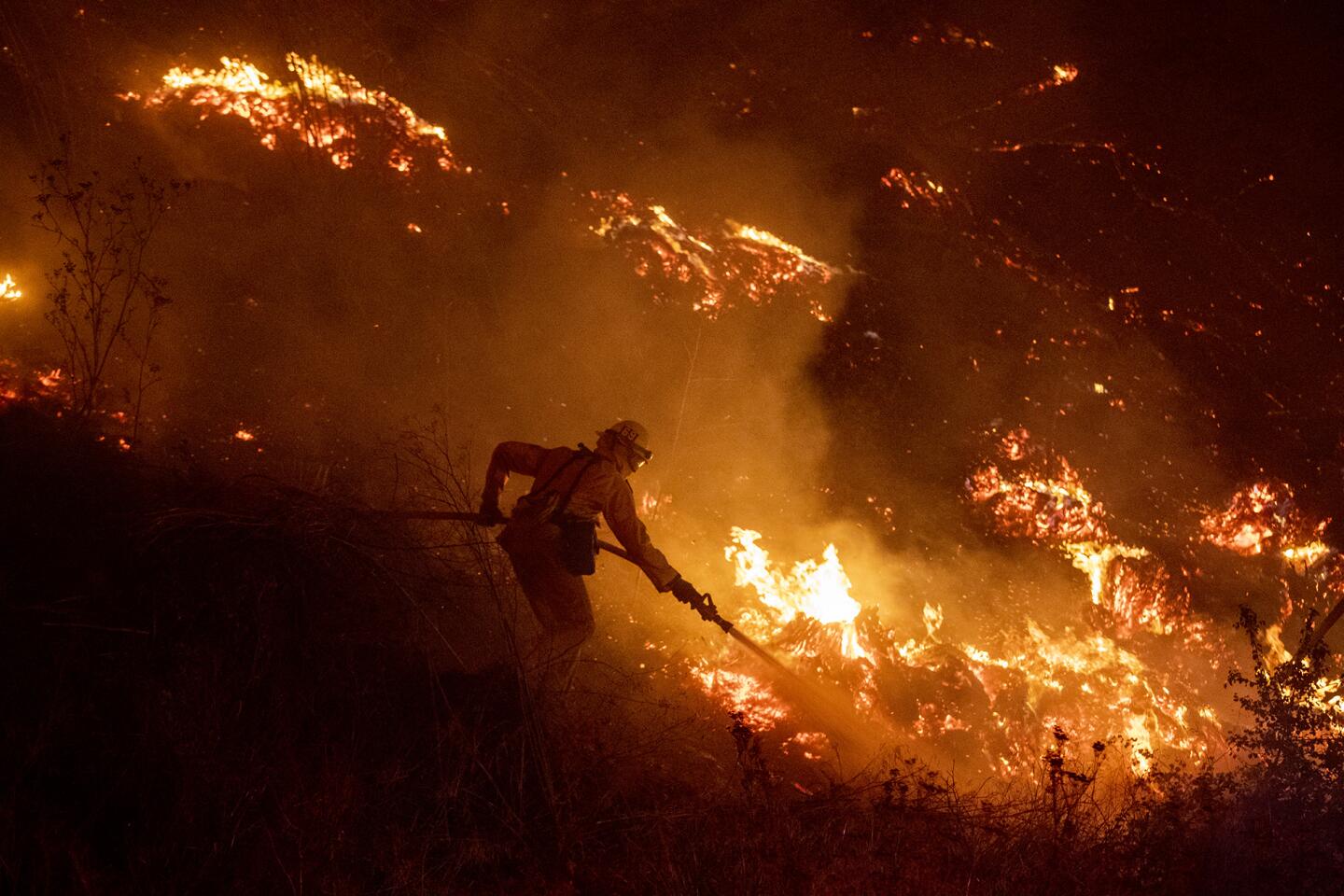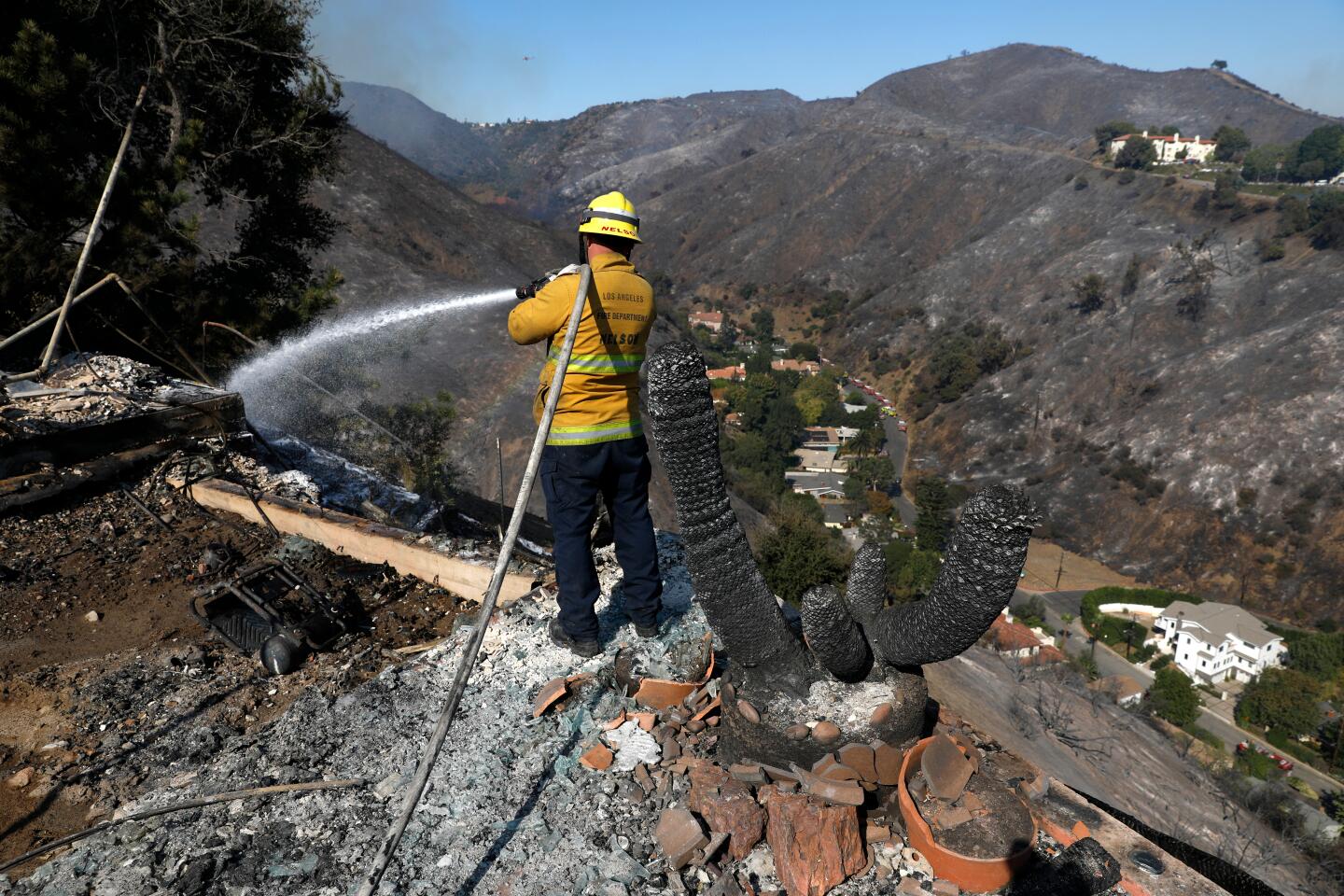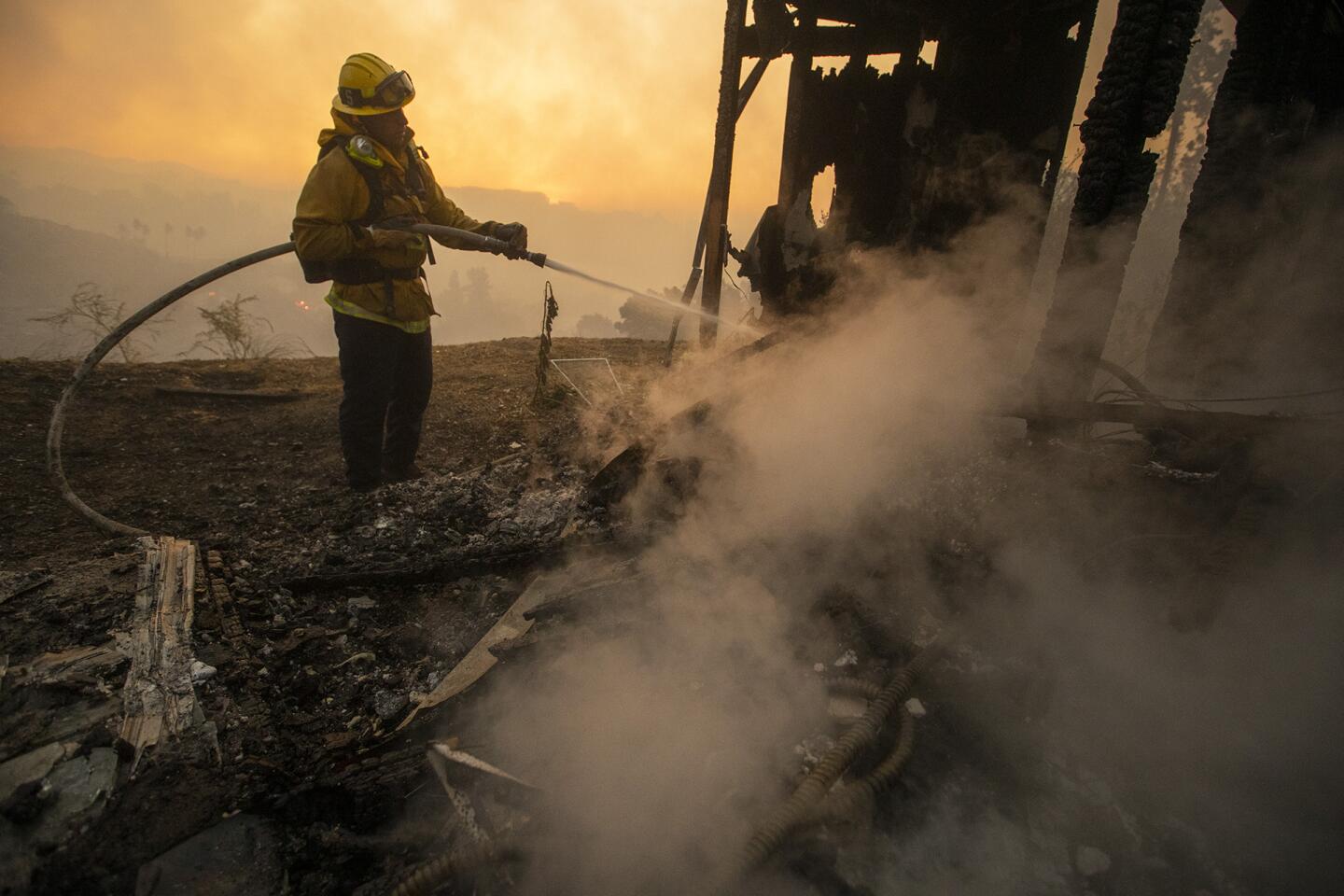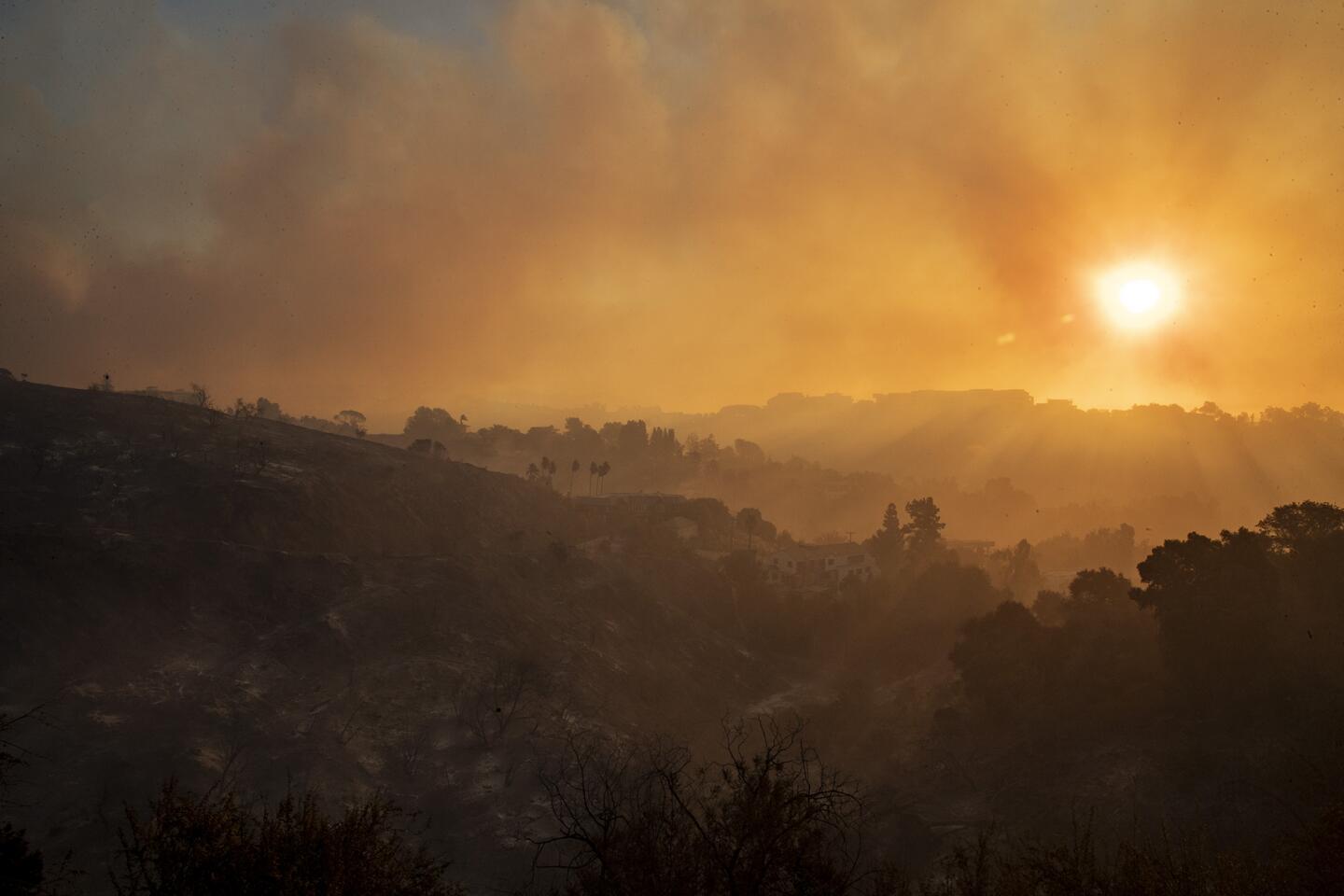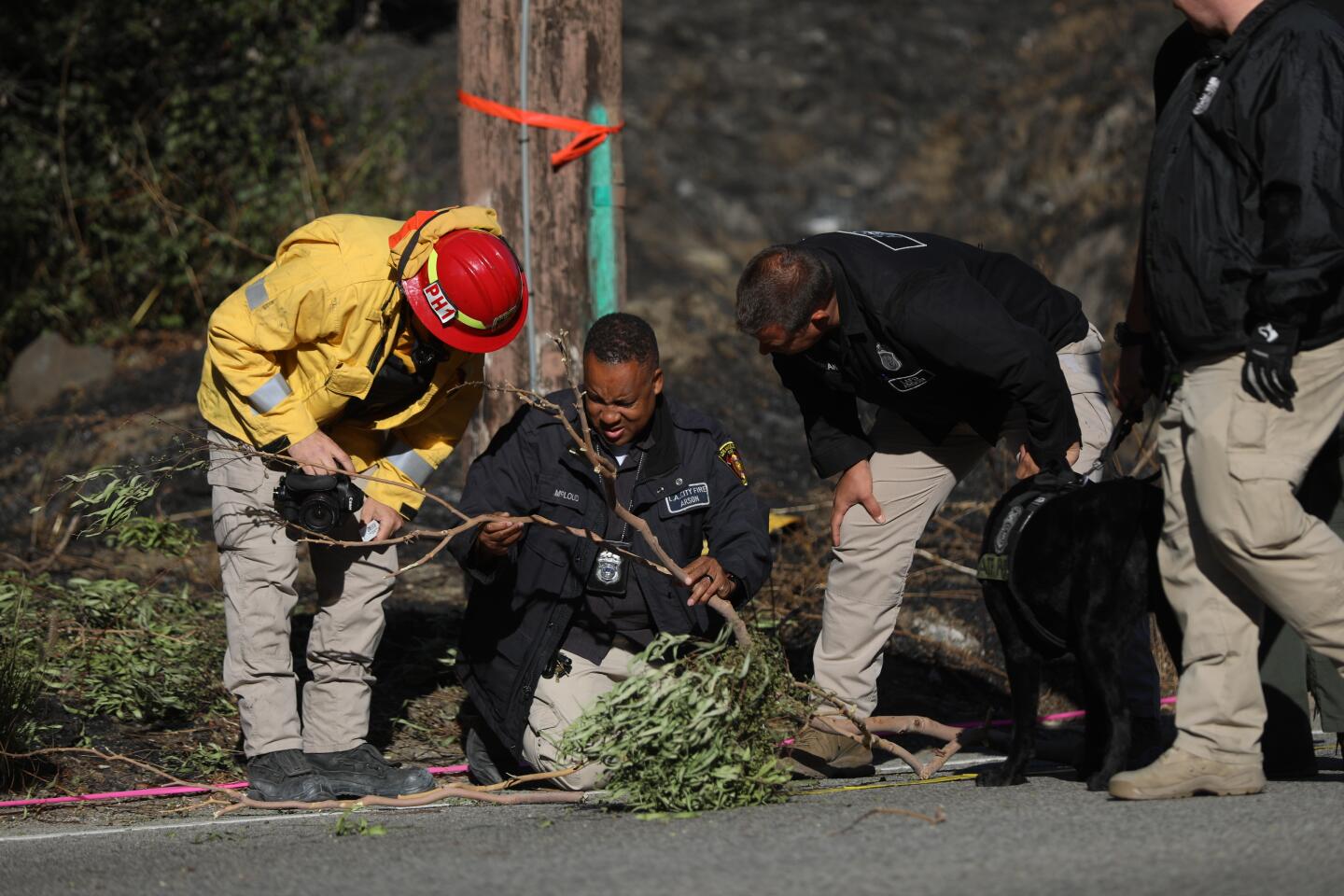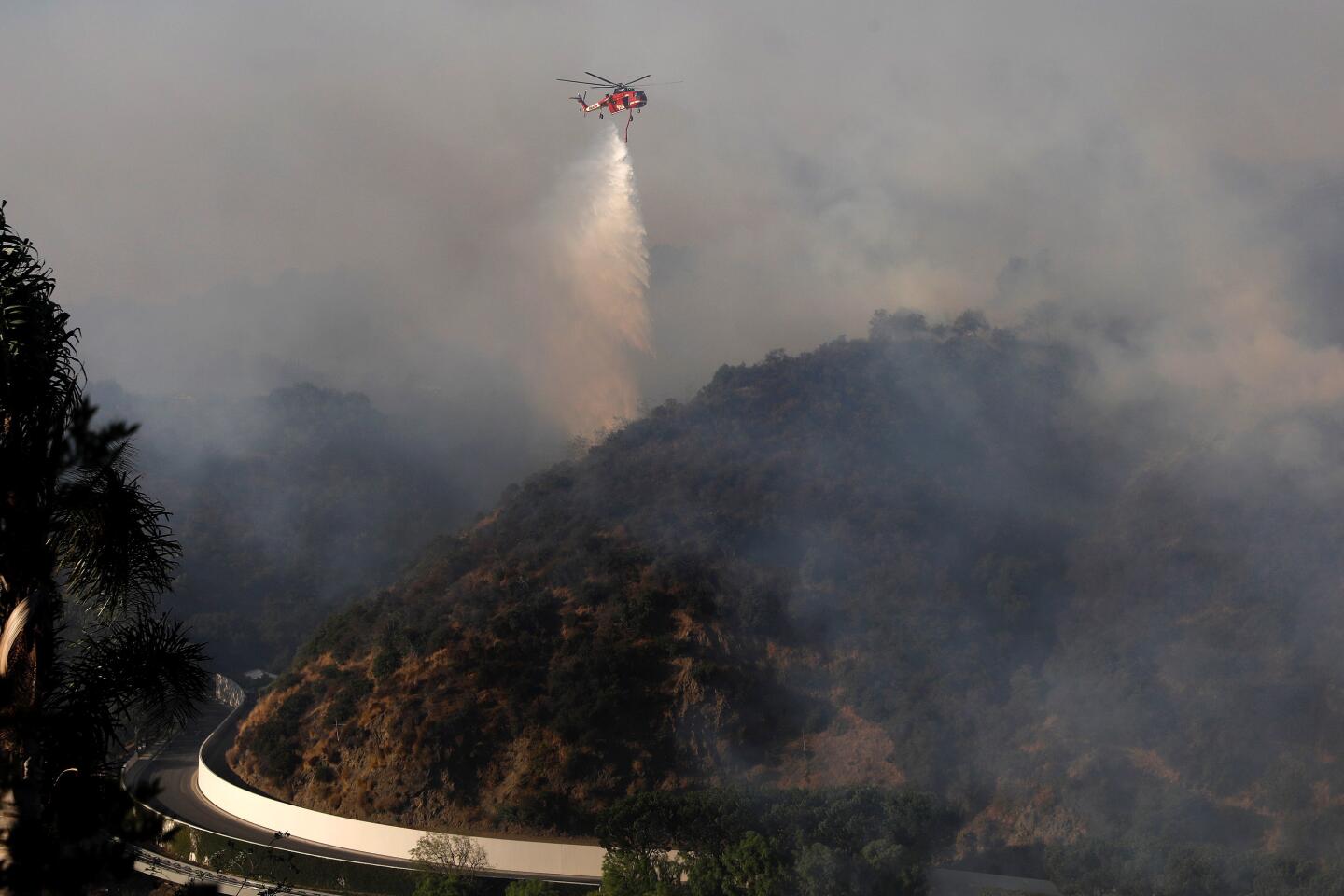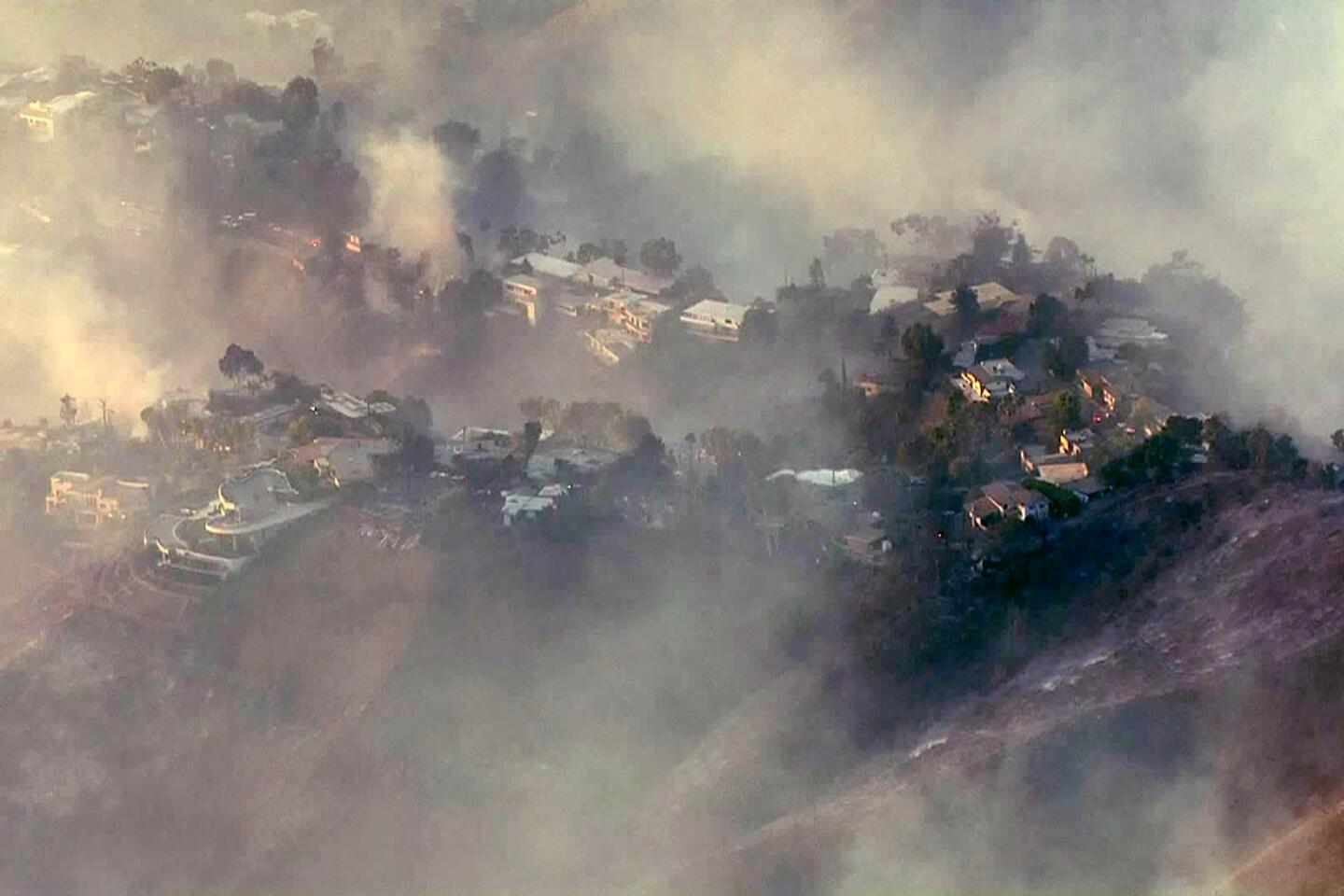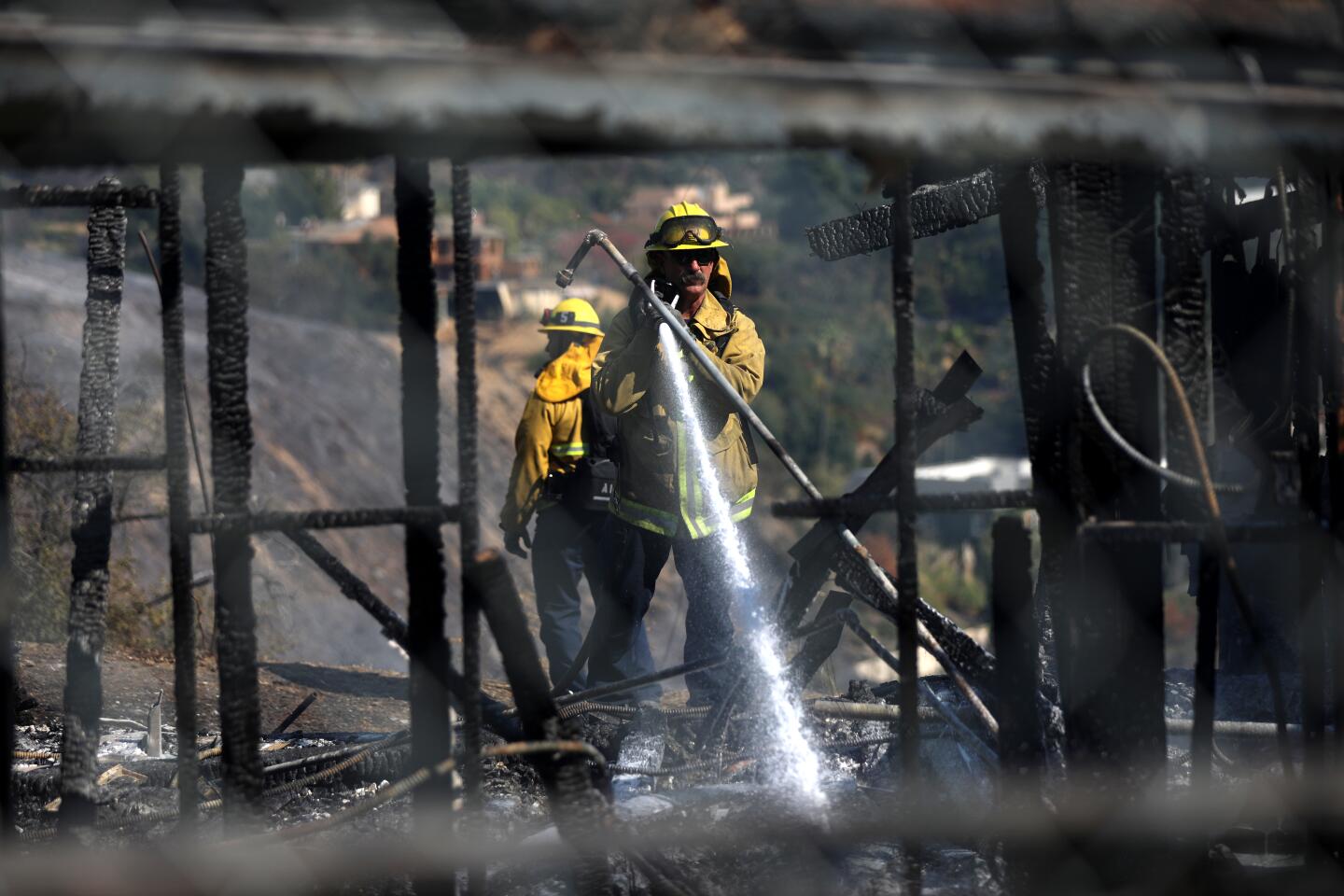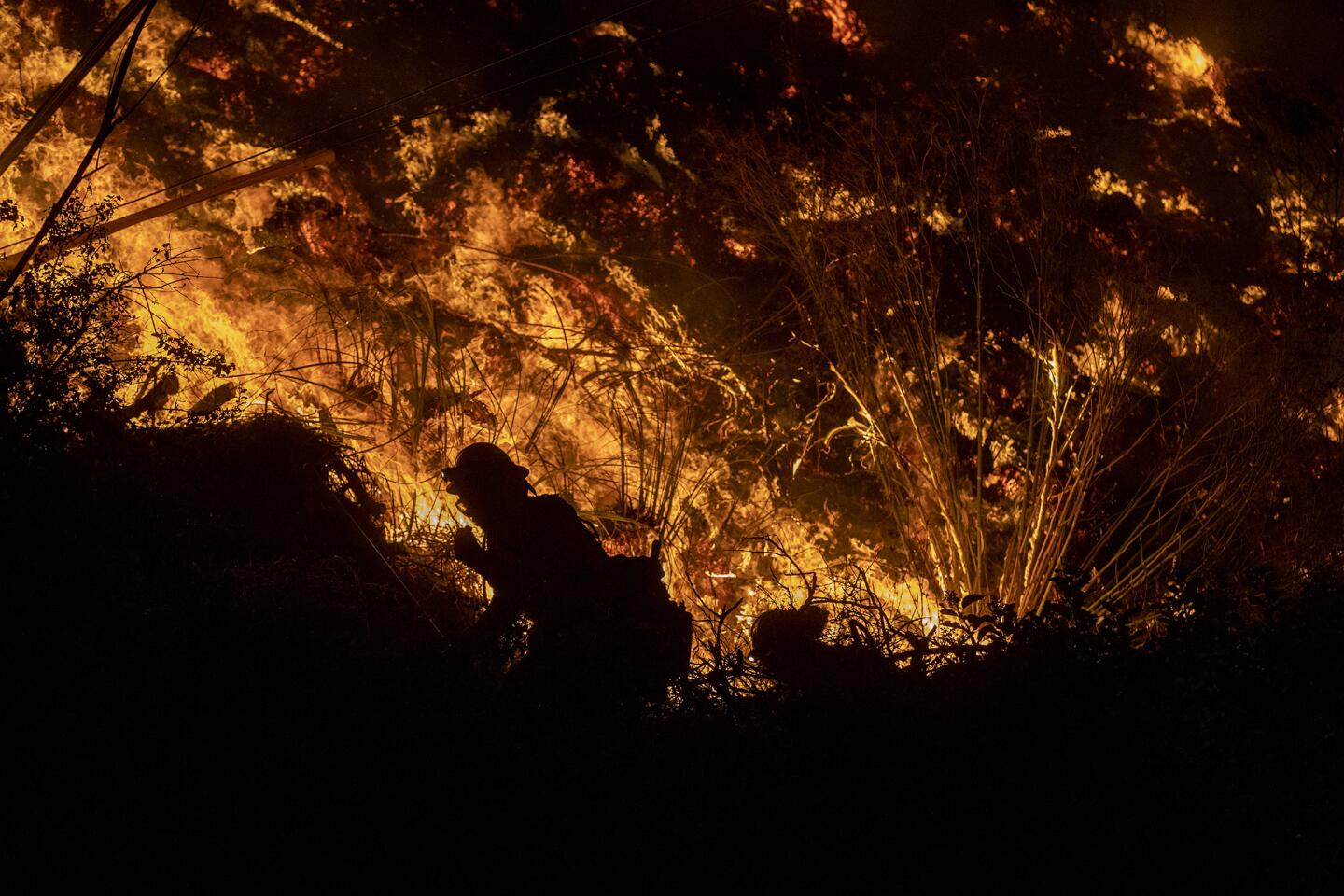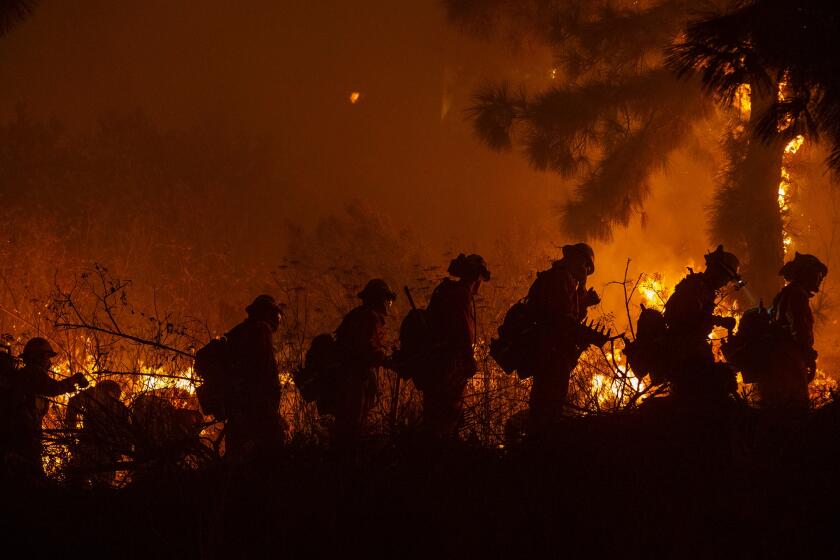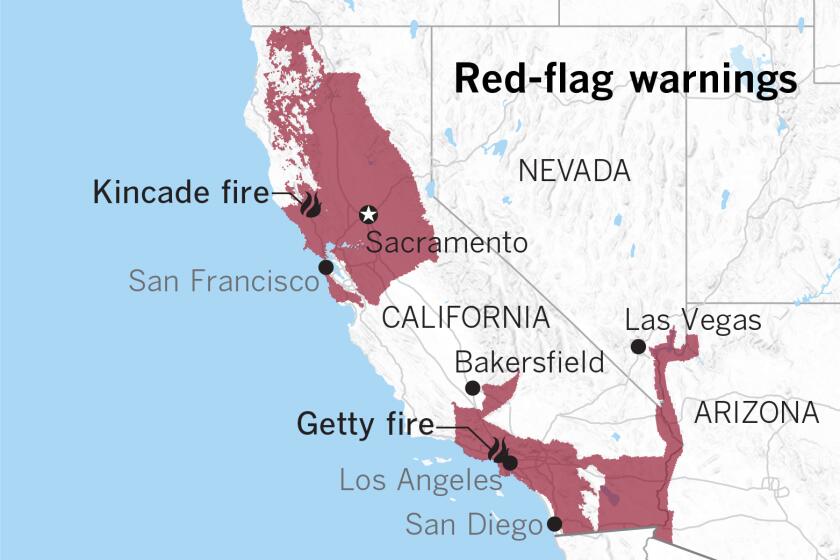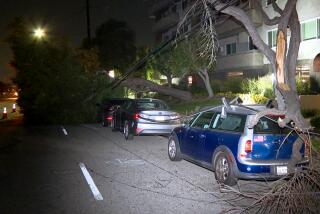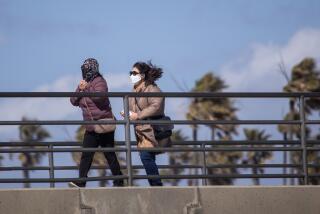Worst winds of the season batter California, bringing prospect of more blackouts, fires and evacuations
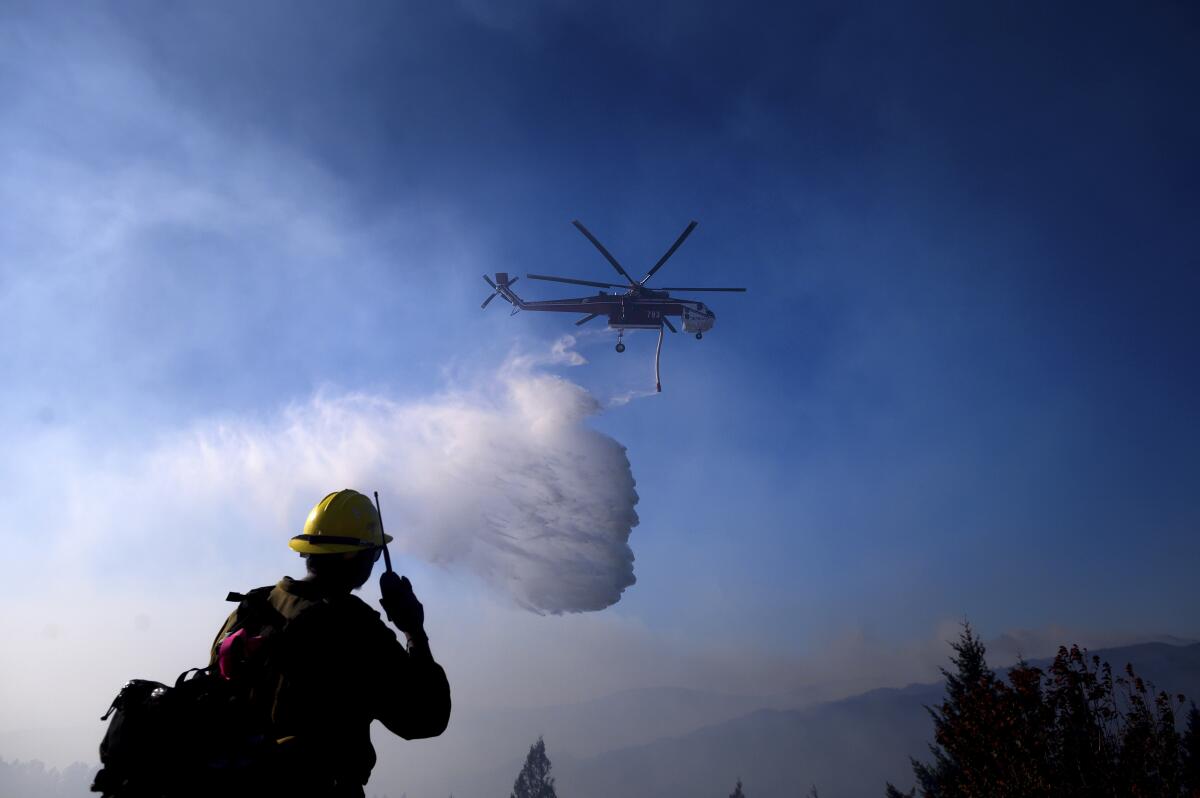
After enduring weeks of destructive fires, widespread blackouts and extreme weather conditions, California faced another test as powerful winds that forecasters described as historic and potentially disastrous moved into the Southland.
The Santa Ana winds of 50 to 70 mph, with isolated gusts of 80 mph, will be the strongest to hit the region in recent memory and sparked urgent preparations for more potential fires and evacuations. They are expected to hit early Wednesday and continue through Thursday.
“The magnitude of the wind gusts really are going to be a concern,” said Daniel Swain, climate scientist with UCLA and the National Center for Atmospheric Research. “The actual winds that people experience really will be quite extreme in a lot of places, really everywhere except for the wind-sheltered parts of downtown L.A. and central L.A.”
Firefighters had taken advantage of relatively calm conditions Monday to take a stand against a massive fire in Sonoma County wine country and a smaller fire burning through an affluent part of west Los Angeles.
But as the winds pick up, the battle will enter a pivotal stage, when embers can fly long distances and spark fires that can rapidly spread.
The winds in Northern California will blow from offshore toward the northeast at speeds of up to 65 mph, hindering efforts to contain the 76,138-acre Kincade fire, which has destroyed 189 structures, including 86 homes, and forced nearly 200,000 people to flee.
After touring the damage caused in L.A. by the Getty fire, Gov. Gavin Newsom said 43 counties in California are under red flag warnings, with “at or near historic wind events.”
“This has been a tough week,” he said.
Pacific Gas & Electric Co. said it could shut off power to well over 1 million people in its latest bid to reduce wildfire risk.
The blackout would cover more than two dozen Northern California counties and would come just days after a much larger power shut-off that left more than 2 million people in the dark over the weekend.
To the south, the forecast of extreme Santa Ana winds prompted Southern California Edison to say it could shut off power to more than 350,000 households in Los Angeles, Ventura, Santa Barbara, San Bernardino and Riverside counties.
The danger from power lines was underscored Tuesday when L.A. officials said a Los Angeles Department of Water and Power line hit by a tree branch sparked the Getty fire.
The high winds will probably keep evacuation orders in place for both the Getty and Kincade fires while increasing the odds of new evacuations.
Strong winds could ground helicopters that have been essential in fighting the Getty blaze, which has destroyed 12 homes in Brentwood, Los Angeles Fire Department Chief Ralph Terrazas said Tuesday.
Near the Kincade fire, people who had left their homes crowded into shelters, crammed in with friends or hunted for available hotel rooms. Others hunkered down, gathering their belongings in case they had to leave, or sheltering in place for the long haul.
Temperatures were expected to dip into the 20s in some areas, creating one more hazard for those without power or living in makeshift conditions.
In St. Helena, Heidi Santos struggled to feed her young son, who has food allergies.
Her power has been out since Saturday. Everything in the refrigerator has spoiled, and cooking at home is too difficult.
Eating out is dicey, too, because she can never be sure if the meal contains soy, eggs, gluten, almonds or fish, all of which could set off a dangerous allergic reaction.
With school closed on Tuesday, both of Santos’ children played at a nearby Boys and Girls Club while she charged her cellphone at a PG&E tent.
For Santos, the blackout has also meant lost wages. She works as a housekeeper, and her employers evacuated over the weekend, making Tuesday her second day without an income.
In Calistoga, the nuns of Holy Assumption Monastery still had power, thanks to the city generator.
The 10 women who reside in the turreted complex have been under an evacuation warning since the weekend.
If the winds shift and the warning becomes a mandatory order, they will head three hours north to a monastery in Manton with a large guest house.
They have filled their gas tanks and prepared pet carriers for their four cats and four birds. When the time comes, they will pack up the religious icons on display in the chapel.
Meanwhile, they have been checking on parishioners, particularly older women who live alone.
The nuns told the women that they could come along to the other monastery. But most have relatives or second homes to go to, Sister Mother Macrina Roeber said.
Also in the Calistoga area, Julie and David Keller were preparing to leave the compound that has been in their family for more than a century.
Despite the property’s history, all the buildings are new. The old ones were destroyed two years ago in the Tubbs fire — four houses, the family hatchery, the chicken coops.
As the Kellers loaded large, framed family photographs into the trunk of their car, headed for another family property in the Central Valley, their aunt explained why she was staying behind, despite a mandatory evacuation order.
The power had gone off over the weekend. The temperature was dipping, and there was no heat.
But Denise Drawski was from tough country stock. Surely, her great-grandmother had lived on this same mountain without heat. About a dozen neighbors also planned to stay and defend their properties with water hoses.
They could always flee if it came to that, she said.
Times staff writers Rong-Gong Lin II in San Francisco, Maria L. La Ganga in Sonoma County and Hannah Fry, Alex Wigglesworth, Cindy Chang, Joseph Serna, Colleen Shalby, Richard Winton and Dakota Smith in Los Angeles contributed to this report.
More to Read
Start your day right
Sign up for Essential California for news, features and recommendations from the L.A. Times and beyond in your inbox six days a week.
You may occasionally receive promotional content from the Los Angeles Times.
